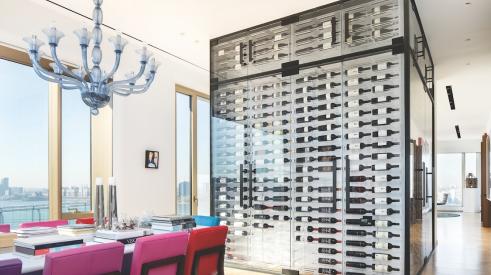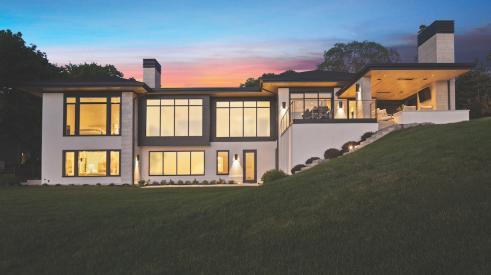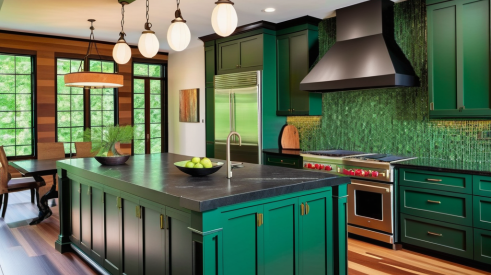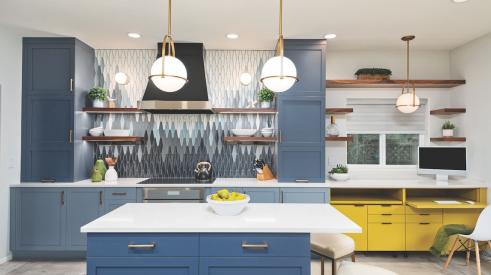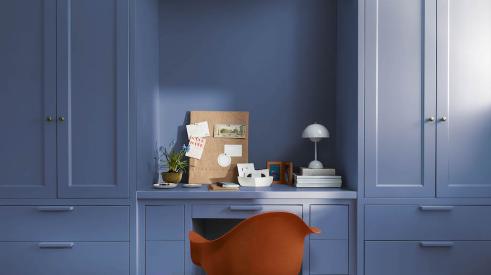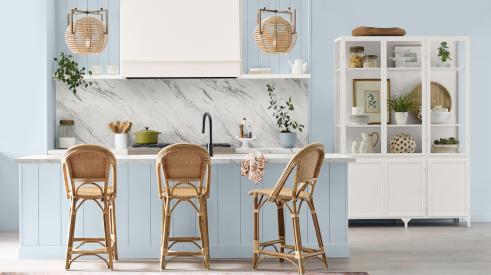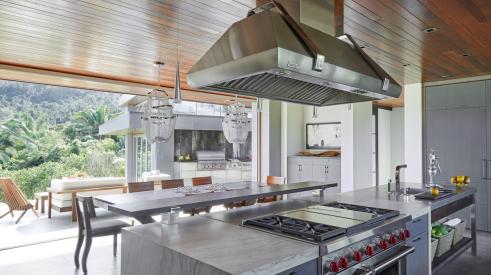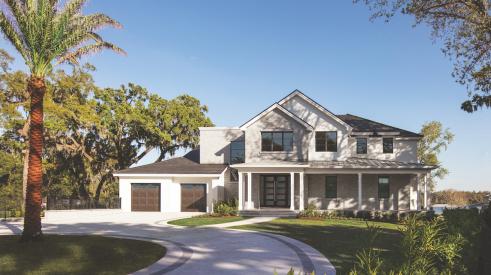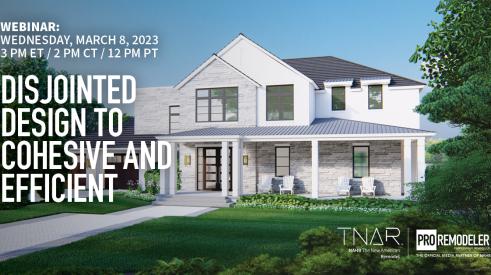Skeptics take note: You can teach an old remodeler new tricks. Professional Remodeler's Model reMODEL introduced state-of-the-art business systems and building technologies in a high-end spec remodeling job (see "Systematic Review," October 1999), and every participant in the project came away wiser.
| Model reMODEL 1999 set new standards in measuring the success of innovative products and business practices |
The bar was set high. Former real estate agent Mark Wade has been buying, remodeling and selling old houses in Philadelphia's trendy Center City section for five years. He knows virtually every house in the area. His spec remodels reflect buyers' priorities with mirror-like accuracy. Together with remodeling pro John Fries, this team produces exquisite redos that delight the city's affluent homebuyers and reap hefty profits. How do you improve on success like that?
Enter Model reMODEL project manager Bill Asdal, CGR, and the NAHB Research Center. An award-winning contractor, Asdal has been highly successful remodeling properties as investments. But his style differs dramatically from the Wade/Fries model. Where Wade and Fries rely mostly on intuition and experience, Asdal applies systematic project scrutiny. Where Wade and Fries work largely with information stored in their heads, Asdal backs up the between-the-ears stuff with detailed, computer-generated analyses. Going into the Model reMODEL, Asdal wagered that his systems would enhance Wade's business. For the NAHB Research Center, the Model reMODEL was another kind of test case.
Research Center research analyst Chad Garner and construction technology specialist Mike Grothe monitored the process as Fries's crew and subcontractors installed innovative products during the remodel. Their real-life case study supports the U.S. Department of Housing and Urban Development's Partnership for Advanced Technology (PATH) initiative by evaluating new technology for the construction industry. How would Fries and crew take to these new systems? How would the new systems compare to the old ones? That's what Garner and Grothe planned to find out.
| Hardwood floors and decorative crown molding create an elegant look in the living room, located at the front of the house at street level. Windows match the Federal style of the 186-year-old house. |
John Fries calls the Model reMODEL at 268 S. Third St. "the miracle on Third Street." He tore into the 1813 townhouse early in July 1999 and completed the transformation into luxury residence by the first week of November, just in time for the Remodeler's Show. Because it was basically a gut-and-rebuild of a very old five-story house, the job could have taken six or seven months, he says. "The time frame was critical from the beginning. Bill Asdal and I both knew that."
| This sunny bath sticks to the home's historical theme by including a patterned ceramic tile floor. Despite the bath's charm, many modern amenities were used. |
But until the Model reMODEL, Fries fleshed out the production schedule on jobs as he went along. On this project, Asdal drafted a detailed schedule at the outset using Microsoft Project software. Changes to the schedule along the way automatically adjusted the entire sequence of dates.
During tearout, Fries discovered termite damage that necessitated installation of new microlam floor framing. The unanticipated work added a week to the schedule, says Fries. Plugging that and other information into the computerized schedule, Asdal says, "I anticipated 12 weeks early that the project was going to miss the deadline." Over the ensuing weeks, the schedule changed six times to accommodate shifts and plan alterations, he says.
With about six weeks to go, Asdal generated yet another schedule update that alerted Fries he was in trouble. "We went to a seven-day work week," Asdal says. Fries ran split shifts with additional carpenters and worked painting crews day and night. "My intensity level was up," Fries says. "I had to become a little more aggressive [about getting the work done]." Fries admits that the last-minute rush took a quality toll, however. "We had a big painting punch list."
| Raised panel wall system creates a look fitting the house's historical background. A Jefferson door (left) opens onto the back deck. |
The verdict on computerized scheduling? Fries is a convert. The Microsoft Project reports gave him foresight that he never had before. "It was easier to visualize from two weeks away [with the revised schedule]." Fries used the schedule as a reality check and to keep trade contractors updated on when they'd be needed. That made the finely orchestrated schedule succeed, even with multiple trades working in tandem.
Since the Model reMODEL, Fries has purchased a computer. "I would need some training in Microsoft Project," he says, but he's game.
| Owner Mark Wade (right) and remodeler John Fries were introduced to new business systems through the 1999 Model reMODEL project. Fries is a convert to project management software, and Wade's seen how a disciplined financial plan can add profit to speculative remodeling. |
Fries's crew and trade contractors were construction guinea pigs in a way, installing seven innovative products and systems in the Model reMODEL so the NAHB Research Center and PATH could see the outcome. "I give high marks to them all," Fries says. Make no mistake; Fries knows that people resist change violently and that adjustments needed to be made by the trade contractors, especially those trying such radically new systems as flexible gas piping and flexible plastic plumbing tubes. But grumbling aside, the new systems demonstrated compelling advantages. Here's the rundown from Fries and the Research Center. (For the full report, go to www.housingzone.com's Model reMODEL 1999 section.)
Plastic plumbing manifold and flexible tubing (Vanguard): A central distribution manifold for all domestic water supplies, this system gives each fixture its own pipe. It's fast to install, says Fries, and the water supply to each fixture can be shut off individually for service. "It's wonderful." Research Center: The system installed almost 65 percent faster and cost approximately $900 less to install than estimates for conventional copper plumbing pipe. The cost savings is in labor; the plastic tubing pulls off a reel, making rough-in extremely fast compared with cutting and soldering copper pipe.
| The kitchen takes up the entire lower level, which had a hard-packed dirt floor before the remodel. The door in the background leads to stairs to the back yard. |
Flexible gas piping (Gastite, by Titeflex): "A great time saver," says Fries. Research Center: Gastite can easily be "fished" from a spool through wall and floor cavities, unlike steel or black iron, which has to be measured, cut and threaded. Though flexible piping is considerably more expensive than black iron, that cost is largely offset by savings in labor.
Latex foam sealant (DAPtex): "I like it," says Fries. It expands a little less than polyurethane foam, so you don't get that "out-of-control feeling," he says. You can easily wash it off your hands, too. Research Center: Latex foam remains flexible and allows for the expansion and contraction of window and doorframes. No shaving of excess dried sealant is needed.
|
Prefinished drywall corners (No-Coat): This is one of Fries' favorite innovations. The corners go up easily, they're available with a rounded or square edge for different applications, and they're strong--you can hit them with a bat [and they won't dent]," he says. Research Center: The prefinished corners are more than double the material cost of conventional metal or vinyl corner bead, but using them eliminates the need for repeated mud applications, provides perfectly square corners, and covers imperfections more easily than conventional corner bead. Again, higher material costs could be offset by labor savings.
Recycled wood/plastic composite decking (Trex): "It holds up well," says Fries. "It's a little more dense [than pressure-treated lumber, thus is] a little harder to cut." Research Center: Though more expensive than conventional lumber, this decking is super-durable, and requires no sealants or preservatives.
Low VOC paints and finishes (Benjamin Moore): These paints, with a low level of volatile organic compounds, go on just like regular paint, but without fumes, says Fries. Research Center: Well-suited for enclosed areas and for remodeling projects where the clients will be in the house during production. Another advantage is that these paints dry slightly faster than conventional paints.
Kitchen recycling center (KraftMaid): The four-basket cabinet insert works well, says Fries, and scored points with the homebuyer. Research Center: The system is convenient and easy to install. Recycling centers come in a range of sizes and configurations; be sure to research appropriate cabinet space for the center you select.
|
|
|
|
|
|
|
|
|
Asdal uses three key financial reports in his investment remodels. An investment pro forma tallies all costs and calculates profits to help him decide whether to buy the property. A detailed construction cost estimate helps him adjust what he spends buying and remodeling the property in order to protect his profit. A cash flow schedule graphs his anticipated financial exposure from purchase through sale of the property and alerts him if the picture turns sour.
Until the Model reMODEL, Wade had used none of the above. Fries dubs him the nutty genius. "[Wade] has enough confidence in his market knowledge that the unknowns don't scare him." It turns out that both Asdal's detailed models and Wade's "wing it" approach were on target with the Model reMODEL. Asdal respects Wade's gut command of the financial profile. He hit his numbers. "Financially, there weren't any flaws," Asdal says.
But Wade is adopting Asdal's systems. "I need more discipline on my spending," Wade says. "There's such a margin for increased profits if I use more discipline." The investment pro forma will help him pinpoint the right purchase price and rehab budget. And Asdal's reports will enable Wade to monitor daily, weekly and monthly spending to curb his admitted tendency to make impulsive, expensive decisions during production.
| The Model reMODEL project is located in Philadelphia's Center City section of Society Hill, a high-end part of town where most properties list in the millions. A complete exterior makeover, including 1,200 square feet of shake shingles, helped bring the long-vacant property up to the neighborhood standards. |
Wade bought the Model reMODEL property for $350,000, poured $400,000 into the remodel, and sold the house for slightly less than the $1.2 million he'd planned. He spent an extra $50,000 on construction (reframing; premium wages for a "high-end carpenter" who helped in the final weeks; stripping paint off interior shutters; waterproofing the masonry; replacing the sills with stone; routing ductwork for the central vacuum and other systems). Also, since a real estate agent found the buyer--unusual with Wade's projects--Wade paid a 6-percent broker's commission. On the positive side, the house sold in one month rather than three, saving $12,000 in carrying costs. And Wade's marketing costs were virtually zero.
Although Wade won't divulge his net profit, Asdal says the project fit the pro forma for smart spec remodeling. "[Wade] was wildly successful in terms of profitability."
|
||||||||||||||||||||||||||||||||||||||||||||||||||||||||||||||||||||||||||||||||||||||||||||||||
Model reMODEL 1999 set new standards in measuring the success of innovative products and business practices
Add new comment
Related Stories
Designing, Building, and Installing a Luxury Custom Wine Cube
An 11-foot wine cube enveloping a pantry is the stand out feature of this customized New York penthouse
Marvin Releases Switchable Privacy Glass Window
The privacy glass windows can be purchased from Marvin's Direct Glaze windows
Building A Small Projects Division from the Ground Up
Through hard work and careful strategy, Harth Home Services has seen big growth
Client Design Choices in the Time of Social Media and AI
Social media speeds up the trend cycles, and now artificially created images are falling into homeowners' hands
Design Trends to Watch in 2024
What’s in and out for the upcoming year? Remodeling designers share insights
Insights for Designing Outdoor Kitchens
Was the pandemic-fueled thirst for outdoor kitchen remodels and additions a fluke, or is it here to stay? Plus: The top design considerations for outdoor kitchens
Home Run Remodeling Lessons: The New American Remodel 2023
A final look at The New American Remodel 2023
Webinar: From Disjointed Design to Cohesive and Efficient—The New American Remodel 2023
Access the recording for the first The New American Remodel webinar held on March 8 at 2 pm CT



